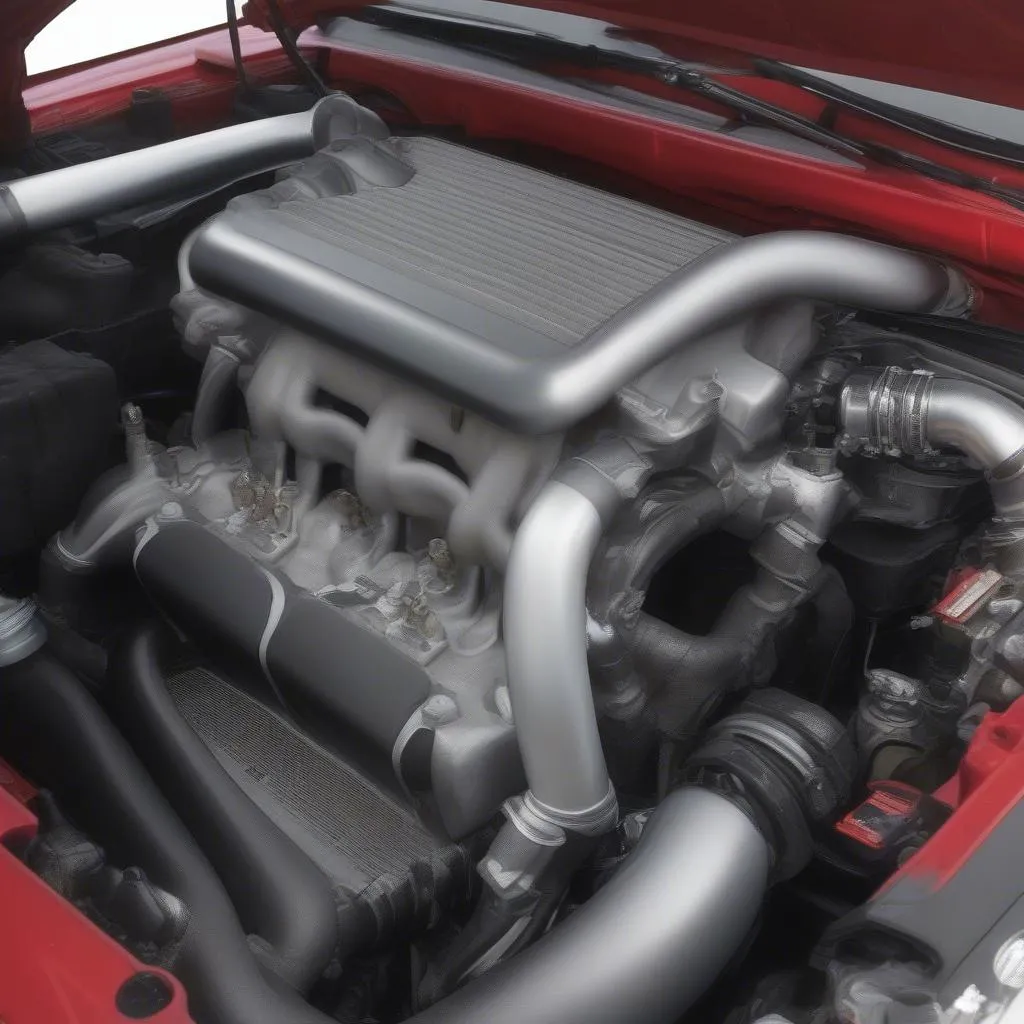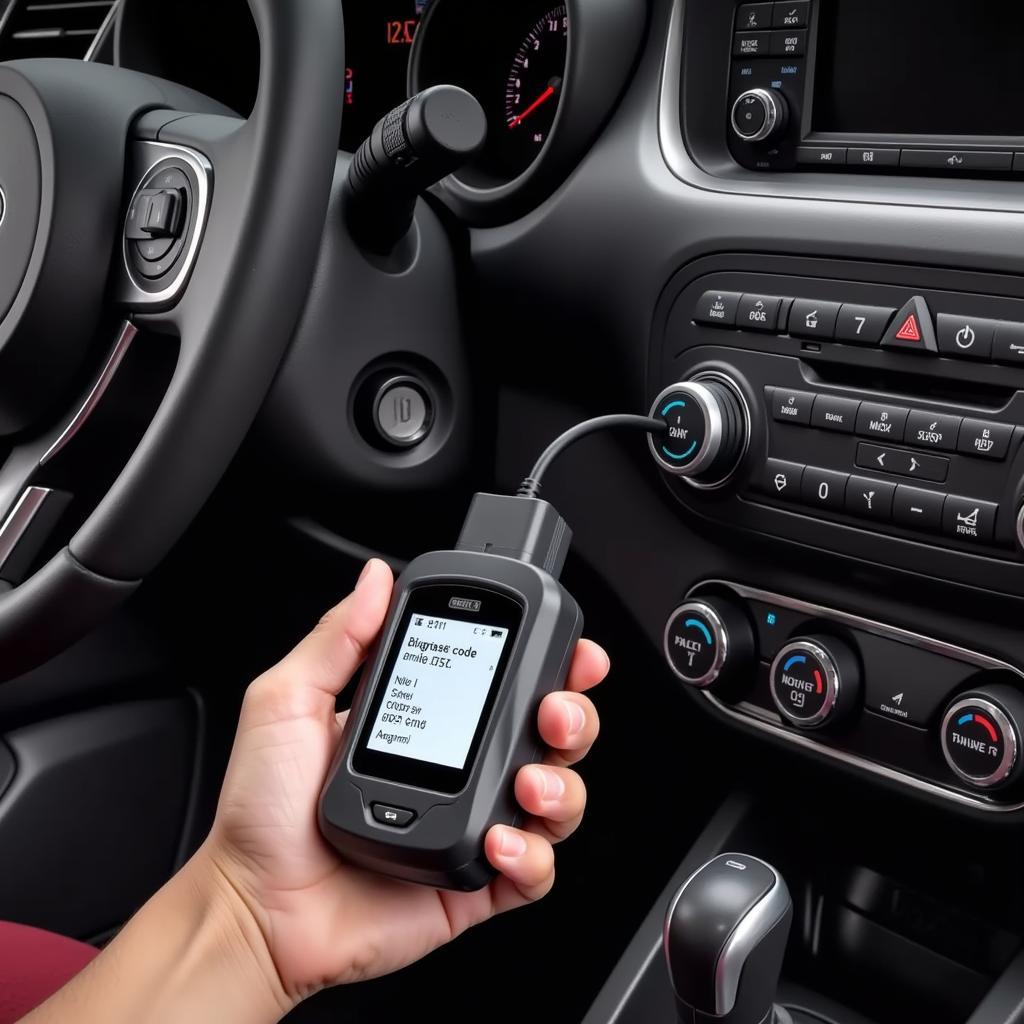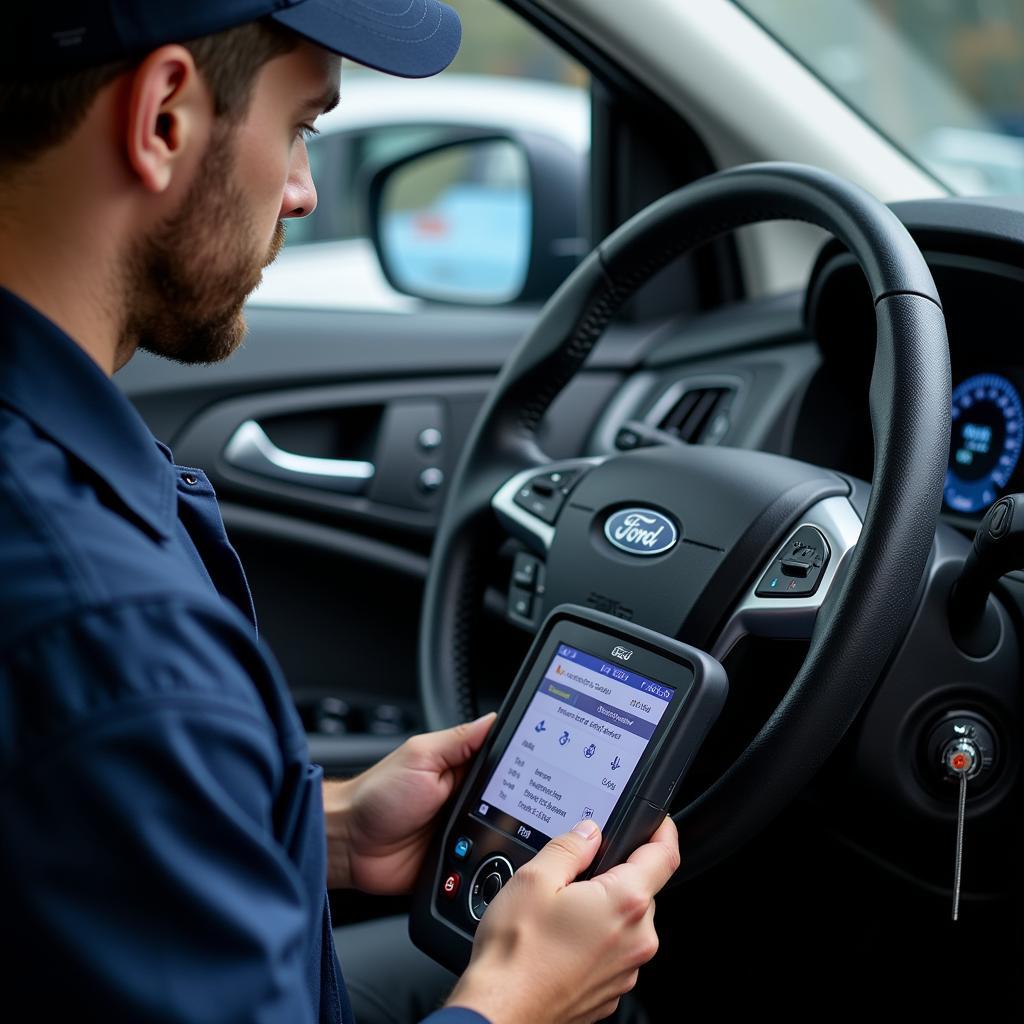“My scan tool is saying one thing, but my vacuum gauge is telling me another story. What’s the deal?” Sound familiar? Don’t worry, you’re not alone. Many mechanics, both seasoned veterans and DIY enthusiasts, have scratched their heads over this very issue. Let’s dive into the intriguing world of vacuum readings and figure out why your scan tool and vacuum gauge might be singing different tunes.
Decoding the Discrepancy: Scan Tool vs. Vacuum Gauge
First things first, understanding what each tool brings to the table is key:
- Scan Tool: Your digital sidekick. It taps into your car’s computer (ECU), grabbing data directly from the source – the manifold absolute pressure (MAP) sensor. Think of it as getting the inside scoop.
- Vacuum Gauge: The analog veteran. It measures the difference between atmospheric pressure and intake manifold pressure. It’s a direct, physical measurement.
So, why the difference?
-
Sensor Calibration: Imagine a slightly off-kilter spirit level; you get the idea. Sometimes, the MAP sensor, like any good sensor, can drift from its factory settings, throwing off the scan tool reading. “I’ve seen it happen with various European cars, particularly older BMW models,” says Peter Schmidt, a veteran mechanic from Munich. “Sometimes, a simple sensor recalibration does the trick.”
-
Vacuum Leaks: Think of it like a sneaky hole in a straw – it messes with your suction. A leak anywhere in the intake system, from a loose hose clamp to a cracked intake manifold, can cause discrepancies between the tools. Your scan tool, relying on the MAP sensor, might not register the leak as drastically as your vacuum gauge, which directly feels the pressure drop.
-
Tool Accuracy: Like any good tool, both scan tools and vacuum gauges have their limitations. A high-quality scan tool from a reputable brand like AUTEL is less likely to be the culprit. On the other hand, an inexpensive vacuum gauge might not be as precise.
-
Altitude: Ever noticed how your ears pop at higher altitudes? Atmospheric pressure changes with altitude, impacting vacuum readings. Your scan tool, with its digital wizardry, might compensate for this, while your trusty vacuum gauge won’t. This is less likely to be a significant factor unless you’re driving through the Rocky Mountains or the Swiss Alps.
Troubleshooting Time: Getting to the Root of the Problem
-
Visual Inspection: Start with the basics. Check all hoses and connections in your intake system for cracks, looseness, or signs of wear and tear. A loose vacuum hose on a Volkswagen Golf in the bustling streets of London can lead to similar discrepancies.
-
Sensor Check: Your MAP sensor deserves some love. Check for dirt, debris, or damage. A faulty MAP sensor needs replacement.
-
Pressure Test: This is where things get serious. A pressure test on your intake system, typically done with a specialized tool, can pinpoint leaks that a visual inspection might miss.
Beyond the Numbers: What Your Readings Mean
Understanding vacuum readings can unlock a treasure trove of information about your engine’s health. A steady vacuum reading around 18-22 inHg (inches of mercury) at idle generally indicates a healthy engine. Fluctuations or low readings can point to issues like:
- Timing Issues: Incorrect ignition timing can disrupt the engine’s rhythm, impacting vacuum.
- Valve Problems: Worn valve seals or a burnt valve can cause pressure loss, reflected in your vacuum readings.
- Clogged Catalytic Converter: A clogged catalytic converter creates excessive backpressure, affecting vacuum.
FAQs – Your Vacuum Questions, Answered
Q: My scan tool shows a higher vacuum reading than my gauge. Is that normal?
A: It can be, depending on the tools and the vehicle. However, a significant difference warrants further investigation to rule out potential leaks or sensor issues.
Q: My vacuum gauge needle is bouncing around. What does that mean?
A: A bouncy needle often suggests a valve train issue, like a worn valve spring or lifter.
Q: Can a bad PCV valve affect vacuum readings?
A: Absolutely! A faulty PCV (Positive Crankcase Ventilation) valve can disrupt the carefully balanced vacuum system, leading to erratic readings.
Need a Hand? We’re Here to Help!
Troubleshooting engine issues can be tricky. If you’re feeling stuck, don’t hesitate to reach out! Our team of auto experts is standing by to provide personalized guidance and support. Contact us on WhatsApp at +84767531508, and let’s get your car running smoothly again.
 Diagnostic tools
Diagnostic tools
 Car engine
Car engine
Remember, a well-maintained car is a happy car. By understanding your tools and paying attention to your engine’s vital signs, you can catch potential problems early and keep your car on the road for years to come!


